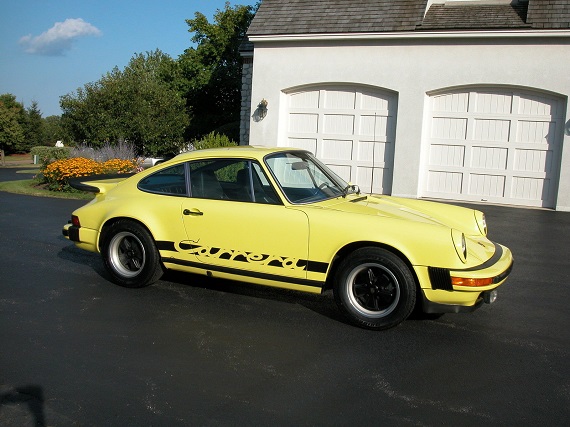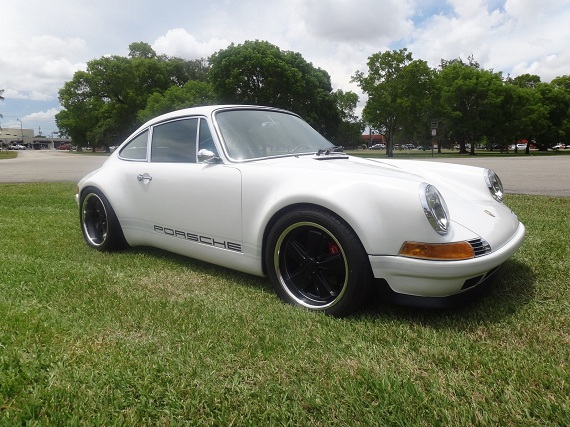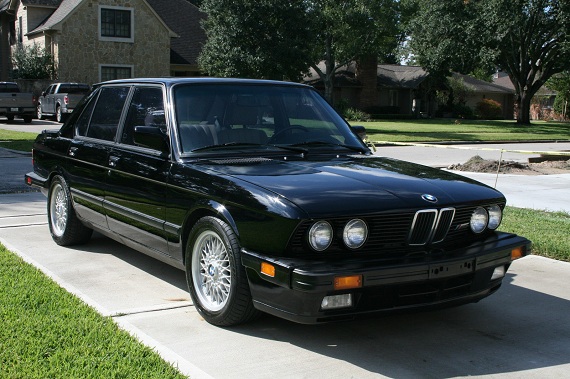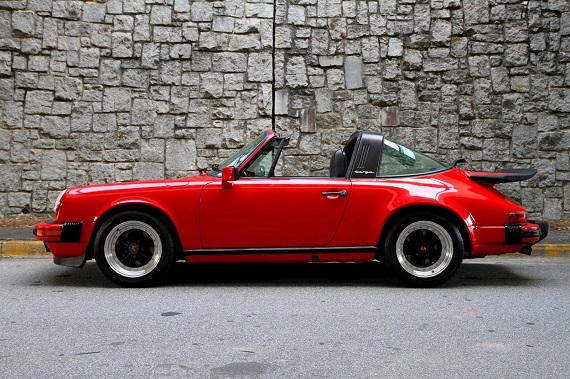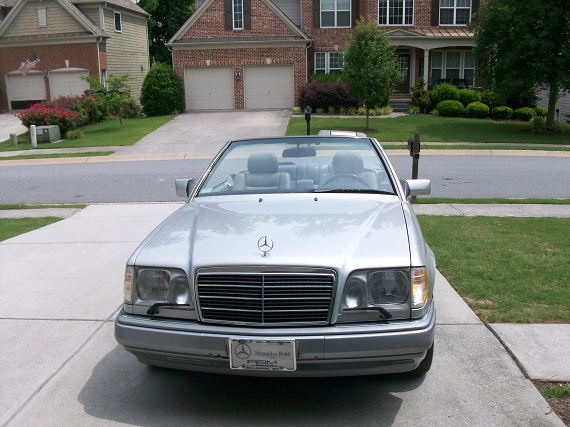I’ve developed a much stronger interest in these cars lately. Not because of any particular affection I feel for the 1974-1977 model 911 itself, but simply because these cars remain somewhat low on the price scale, especially considering their age. They aren’t the best performers and have been known to have engine issues, but I’m curious where the market for them is headed and what sorts of options we come across in terms of the condition of the cars. There were two models produced for the US market during these years (the 911 and 911S), primarily distinguished by a 25 horsepower bump (up to 175 hp) in the 911S, and these cars were distinguished from their predecessors by being the first models to have the new impact bumpers. The example featured here is a Light Yellow 1975 Porsche 911 Carrera, located in Illinois, that has seen 117,500 miles.
Month: June 2014
So you want a classic 1960s/1970s Porsche 911. Well, it’s not a great time to jump on the bandwagon. We’ve watched prices on these early 911s jump to unprecedented levels – values on models such as the 1973 Carrera RS have tripled in the past year, where now Hagerty Insurance values a top condition example at $800,000. So, sufficed to say you won’t be getting one anytime soon; and even if you could afford it, then what? Would you feel comfortable taking your million dollar Porsche for a stroll with all those Camry “drivers” more intent on the latest recipe on NPR than signaling to change the three lanes over the to exit they just missed? Don’t worry, they’ll back up to take it. So, what’s an enthusiast to do? Well, many have been inspired by the model of Singer; backdating modern cars to look like older and more valuable examples. As a side bonus, you get improved performance and luxuries that the early cars just didn’t have – items that honestly make the drive more enjoyable. A few weeks ago, I saw a Singer-inspired car at Lime Rock Park that just looked awesome – an updated RS that was dependable and, more importantly, a car that could be driven and enjoyed on a reasonable budget. Today, there’s a similar example for sale on Ebay:
CLICK FOR DETAILS: 1990 Porsche 911 Carrera 4 “RS” on eBay
6 CommentsWell, this one has been brewing for a bit in my head. As I’ve watched E28 and E34 M5 prices climbing and the plateau after falling of E39 prices, the two are in general available for about the same amount of money. One is a well-acknowledged classic – the original super sedan, a well balanced combination of 4-door versatility with a race-bred high-revving inline-6. The second nearly never happened, and seemingly was an afterthought compared to the earlier examples – but that doesn’t mean it wasn’t well thought out. The E39 is one of the best performance bargains going not only amongst BMWs, but in cars in general – with 400 horsepower from a thundering V8, it took the M5 to a new level of performance and demanded the same of its competitors. So, here we have M5 v. M5; a generation gap, a performance gap, but both as performance icons of their respective times and generally accepted as collectable going forward. Which is the one you’d choose? Let’s start with the original:
CLICK FOR DETAILS: 1988 BMW M5 on eBay
8 CommentsAs the air-cooled 911 market has accelerated it has been nice to see some of the nicer driver-quality cars come up for auction and the example here fits that description quite well. Here we another car in Guards Red, though this time a 1987 Porsche 911 Carrera Targa located in Atlanta. The mileage isn’t too high at 111,500 and this one stands apart from the rest with some very sexy HRE deep dish wheels and custom seat inserts that I’m sure will be a very love/hate addition to this car. Needless to say this is not a Targa that will be prized by collectors, but that means it should be obtainable for a better value. With an engine that should have plenty of life left in it that’s the sort of driver-quality Carrera that we’re looking for!
CLICK FOR DETAILS: 1987 Porsche 911 Carrera Targa on eBay
1 CommentFor as long as I can remember, the sign that one “made” it was a Mercedes-Benz, and specifically a convertible one. Sure, if you wanted to go fast you bought a Porsche, and if you wanted to go in the snow you bought an Audi – or if you wanted to do what everyone else on Wall Street did, you bought a BMW. But there was a royal air about Mercedes-Benz models that the others couldn’t really capture. Perhaps it was the long and storied history of one of the most significant automobile manufacturers in the world – a car company that had been selling the best cars in the world to the stars since the 1930s. Perhaps it was the incredible build quality of many of their models; cars not designed to a price point, but to an engineering standard unsurpassed anywhere in the world. Or perhaps it was just simply that the cars Mercedes-Benz managed to make you feel incredibly special, incredibly pampered and yet not be ostentatious or overstated. In truth, it’s probably a little bit of each, and few cars embody this combination of qualities quite as well as the W124 Mercedes-Benz did. You could have economic diesels, versatile estates, sporty V8 monsters, or enjoy the limitless sky the cabriolet version offered you:
